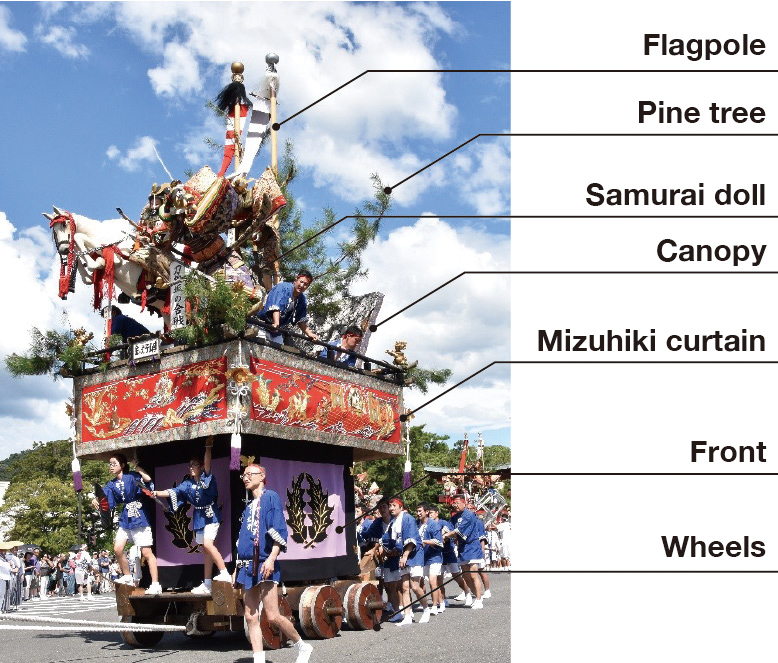
With a design consisting of upper and lower sections, Tsuruga Yama floats are famous for their beautifully extravagant appearance. Each float is given the name of a town from the Edo period.
Upper section
A stage is set, featuring life-sized samurai dolls and horse statues equipped with authentic armor and gold brocade costumes as they act out scenes of battle. In the center stands a pine tree that serves as a vessel for the deity, with flagpoles at its sides. The flagpoles are adorned with gold and silver balls on the ends to represent the sun and moon (nichirin and gachirin, respectively), with red and white streamers blowing in the wind. In addition, behind the stage platform is a fan-shaped canopy (partition) resembling a mountain. The Goshonozushi Yama float features a main tower instead of a canopy. The railing surrounding the stage platform is decorated with a lavish Mizuhiki curtain, which features intricate techniques, such as embroidery and weaving. Some of these curtains are said to have been drawn by famous artists, and are themselves valuable works of art.
Lower section
The body of the lower section area features a front curtain. One of the float’s notable characteristics is its three wheels on each side, with a middle wheel that is slightly larger than the others to allow the float to turn more easily around curves.
Main float With its simple design made of plain, unfinished wood, these floats were once assembled with only vines and wedges, and without the use of nails. After the annual procession, the floats were disassembled and stored.
